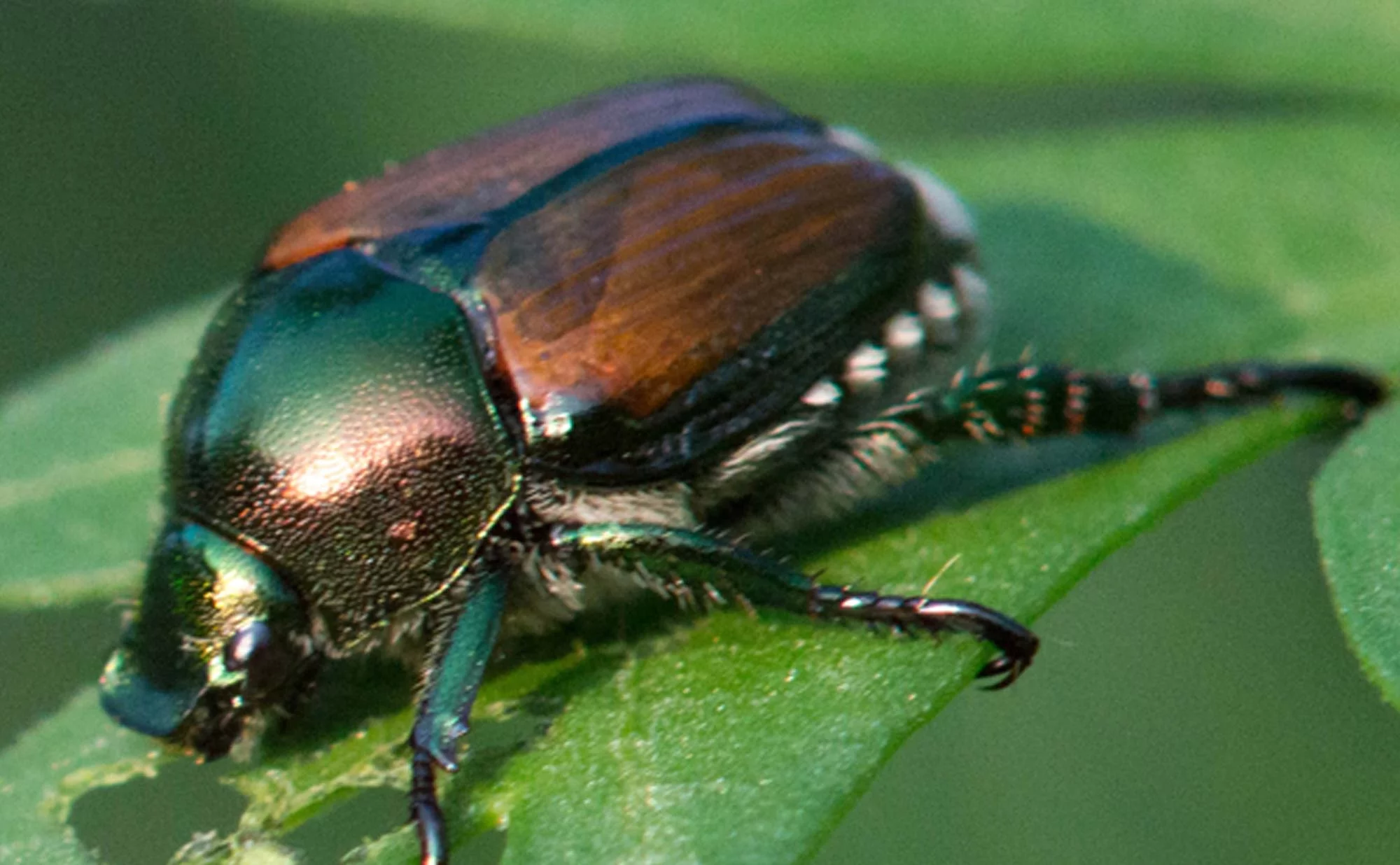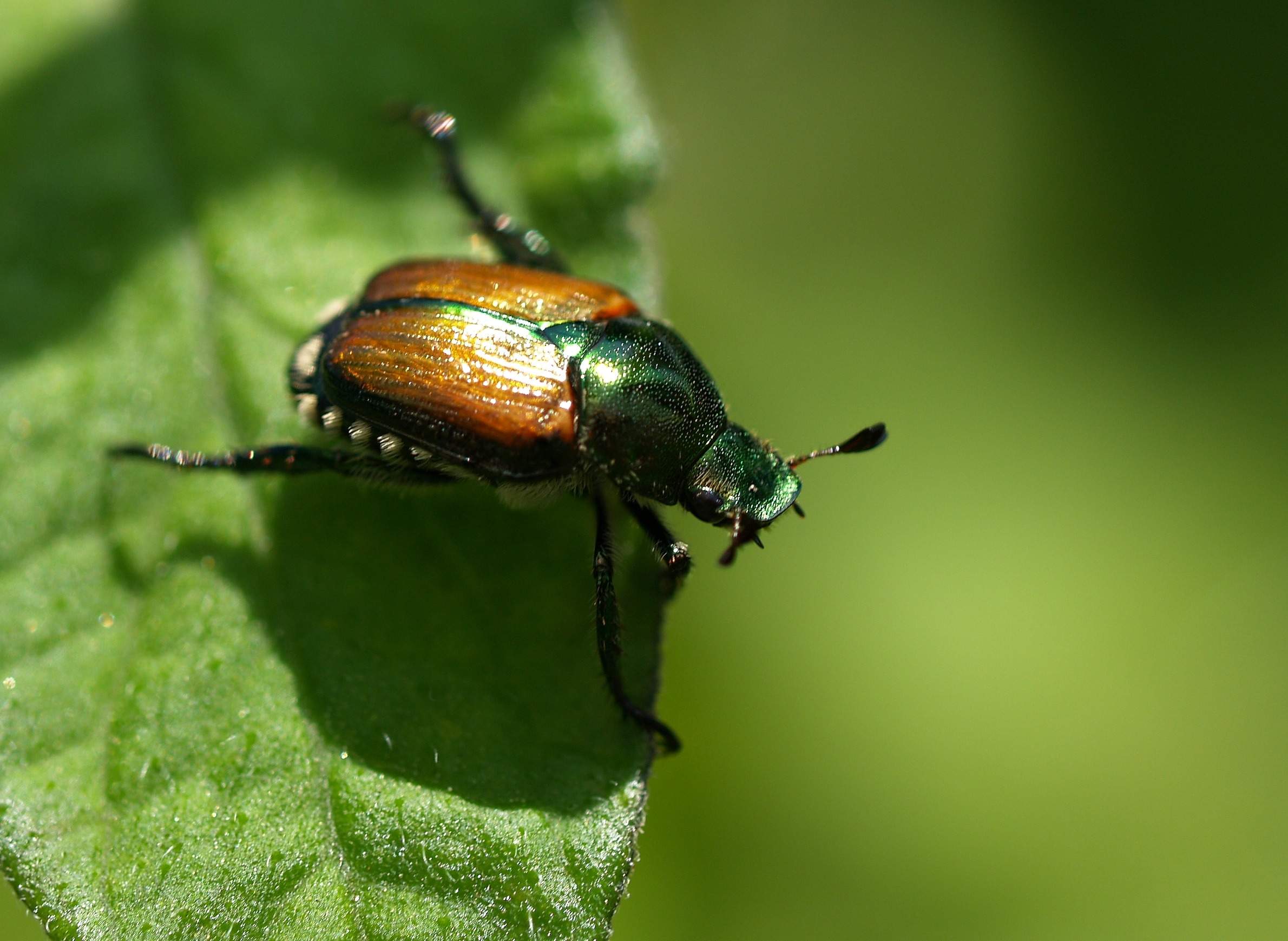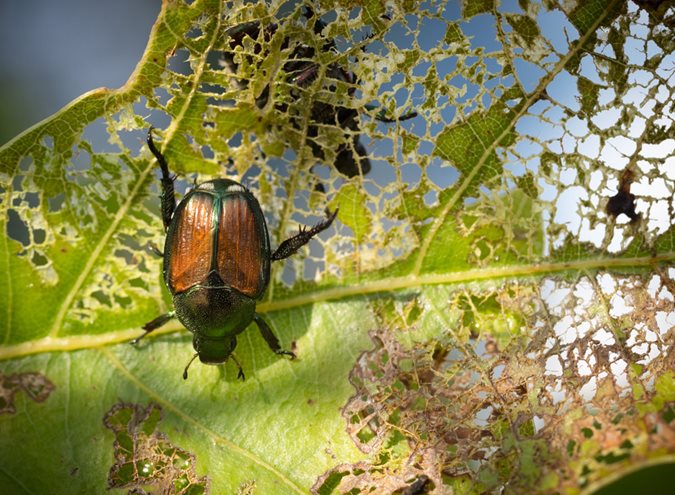japanese beetle life cycle wisconsin
During their summer feeding frenzy the female Japanese beetles are also tunneling into the ground to lay their eggs which will hatch during mid-summer. Adult beetles are most active on warm sunny afternoons.

Japanese Beetle Wisconsin Vegetable Entomology
Japanese beetles have only one generation per year.

. The life cycle of the Japanese beetle is typically one year in most parts of the United States but this can be extended in cooler climates. Soon after they lay their eggs in surrounding turf areas and this continues until adults die-off in. Also beetles thrive in areas where precipitation is rather uniform throughout the year averaging at least 10 inches during the summer.
The Japanese Beetle treatment will kill the beetles that are present at the time of the treatment plus will kill the beetles landing on the treated areas for about 6 weeks after the treatment. Treatment may be justified for fields with three or more beetles per ear and silks that have been clipped to ½ inch when pollination is occurring less than 50 complete. Life cycle Adults appear in late June and are active until early September.
The adults emerge from the ground in late June to early July and begin to feed and mate. In mid-June as soon as they emerge adult females mate and begin laying eggs. Adult females begin laying eggs soon after they emerge from the ground and mate in late-June.
Immediately thereafter females mate with males and beginlaying eggs. If we have a period of above average rainfall the treatment will last a little shorter period of time below average rainfall and it will last longer. Published on July 23 2020 by vkast.
For corn the primary concern is to protect the silks from clipping since heavy beetle feeding on corn silks can impair pollination. We havent had this pest in Wisconsin long enough to fully understand the local life cycle but given the pattern in other states this insect will most likely complete one generation per year with adult presence and feeding damage occurring during the summer from late June through August. Typically Japanese beetles begin to emerge in late June and early July in WI with peak activity for six to eight weeks.
With the Stateline Areas warm spring this year and warmer on average winters we should expect to see many many more. Damage- The c- shaped grubs feed on the roots of grasses. Adults typically begin to emerge in late June or early July around 1000 growing degree days see University of Wisconsin Garden Facts XHT1086 Degree Day Calculation and can be found into September.
The adults emerge in mid-summer and especially like the hotter temperatures. The female beetles prefer to lay eggs in the soil of lawns and other turfgrass areas. The Japanese Beetle has been observed to seek climates between 64 and 82 degrees Fahrenheit and winter soil of around 15 degrees Fahrenheit.
Published on July 14 2017 by EMILY A CROOK. All MayJune beetles in Wisconsin have three-year life cycles except for the widely distributed Phyllophaga tristis which has a two-year life cycle. Adult beetles are most active in the afternoon in full.
Japanese beetles have only one generation per year. To learn more about the Japanese beetle visit Wisconsin Horticulture. Japanese Beetles are the number one pest plaguing yards and gardens across Wisconsin right now.
Studies with Japanese beetles under captivity have shown variations as wide as nine to 74 days in males and 17 to 105 days in females. In midJune or around 1000 growing - degree day units adults begin emerging from the soil. For instance in its native Japan the beetles life cycle is two years long as a result of the higher latitudes of the grasslands required for the larval stage.
You can identify Japanese beetles by their metallic green bodies and bronze wings. This fact sheet on the Japanese beetle considered the single most important turf grass pest in the United States but also very destructive to various plants in the home and commercial garden covers the insects life cycle the damage it causes and the methods of control that are effective against it 3 pages. All MayJune beetles in Wisconsin have three-year life cycles except for the widely distributed Phyllophaga tristis which has a two-year life cycle.
Females leave ornamental plants where they feed and mate and burrow two to four inches into the soil under the turf in a suitable. Just about the time the rose chafer numbers are declining due to their life cycle the Japanese beetles show up in force this past mild winter allowed higher numbers of insects than usual to make it through to this year. Japanese beetles typically show up in early July and by the number of phone calls and e-mails to the office it appears we have a bumper crop this year.
Liesch Director of the UW Madison Insect Diagnostics Lab will present everything homeowners need to know about this pest via YouTube Live on Monday July 27 from 200-300 pm. The generally accepted range is 30 to 45 days Fleming 1972. Japanese beetles aggregate on plants in.
Japanese beetles have only one generation per year. Adults emerge in late May and early June and are active in the evening hours. Adult beetles are active during the daytime and can fly an average of 1 to 2 miles.
A small amount of feeding is done in spring and grubs pupate in May and early June. To help understand how to manage these insects its important to know their life cycle. They have great details regarding life cycle.
Life cycle Japanese beetles have only one life cycle per year. The adults are most active in the afternoon in full sun. Observing Japanese beetles feeding on plants is quite common since the adult beetle feeds on about 300 species of trees shrubs ornamental and fruit trees in addition to vegetable crops.
Damage will appear in later. During the larval stage the white grubs. The beetle is adapted to a region where the mean summer soil temperature is between 64 and 82F and winter soil temperatures are above 15F.
Adult beetles are most active in the afternoon in full-sun. Japanese beetles typically show up in early July and by the number of phone calls and e-mails. Eggs are laid in grassy areas and hatch into grubs that begin feeding in late summer.
The life of adult beetles is relatively short under high temperatures and long under low temperatures Fleming 1972. Females leave ornamental plants where they. The egg larva and pupa life cycle stages develop underground and unless soil is removed or dug into these life stages will not be seen.

Japanese Beetles 100 Years And Counting Insect Diagnostic Lab

Information On Plants That Deter Japanese Beetles And Plants Japanese Beetles Avoid

Japanese Beetle Dry Bean Agronomy

Managing Japanese Beetles In Vineyards Wisconsin Fruit

Pin On Insects Pest Control In The Landscape

Managing Japanese Beetle In Apple Wisconsin Fruit

Schedule My Japanese Beetle Treatment Today Rainbow Treecare

Mild 2015 16 Winter Spurred Japanese Beetle Numbers In Wisconsin Wiscontext

Japanese Beetle Control The Good Earth Garden Center

Japanese Beetle Popillia Japonica

How To Get Rid Of Japanese Beetles Planet Natural

How To Get Rid Of Japanese Beetles Garden Design
How To Control Japanese Beetles Farm And Dairy

Controlling The Japanese Beetle Door County Pulse

8 Facts You Should Know About Japanese Beetle Control Traps Grubs And Their Life Cycle

How To Get Rid Of Japanese Beetles In Your Yard

Japanese Beetle Soybean Pest Soybean Research Information Network Srin

